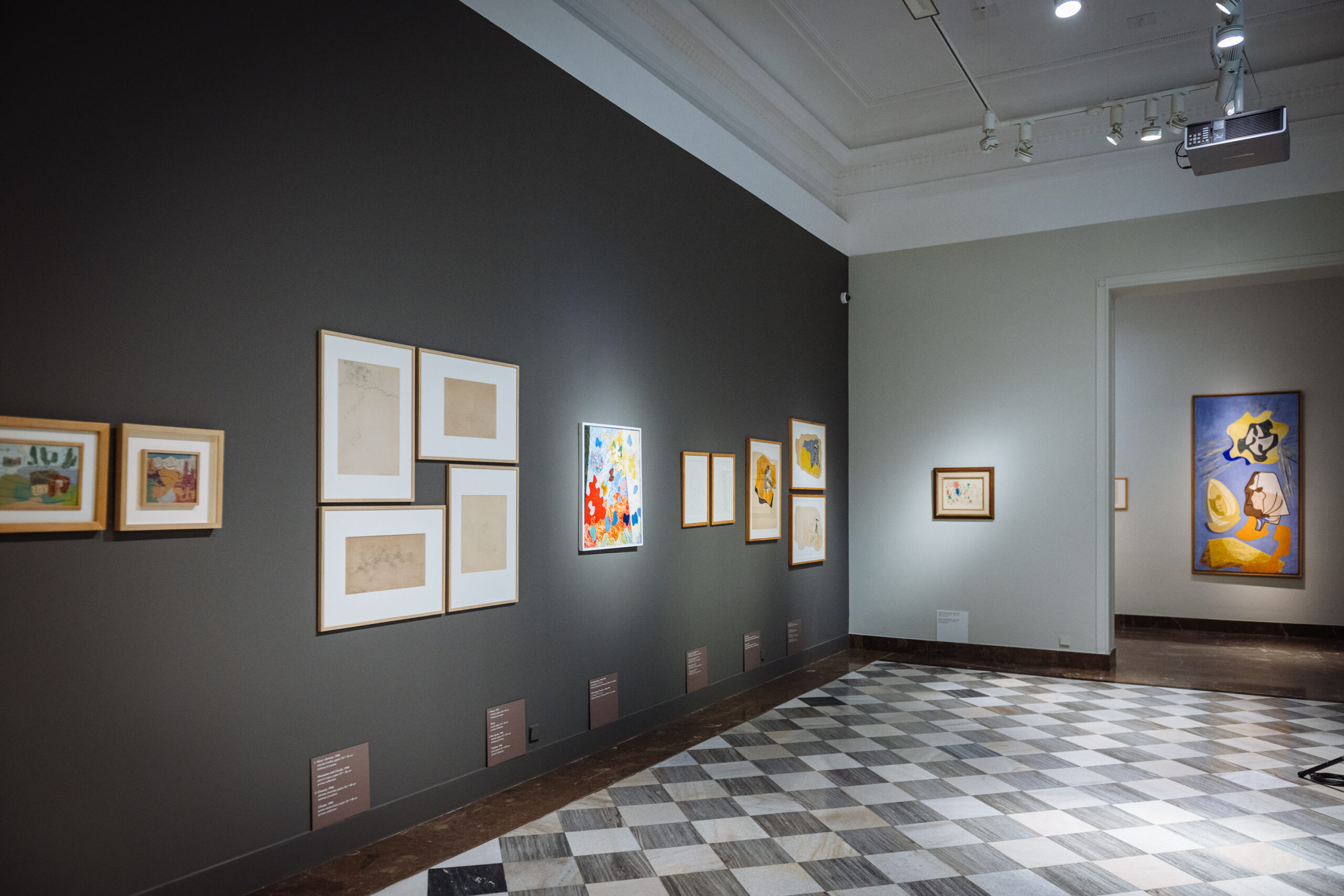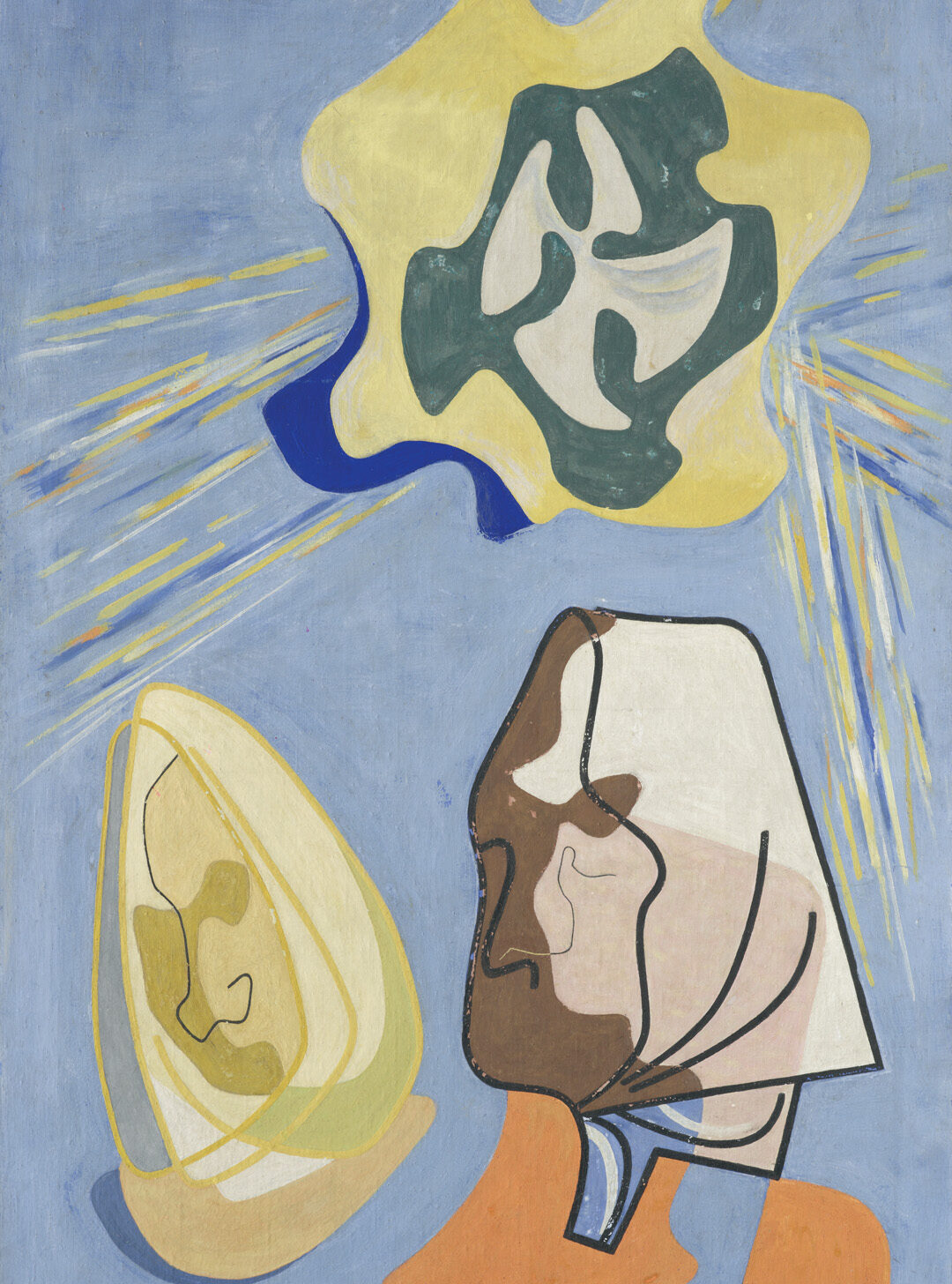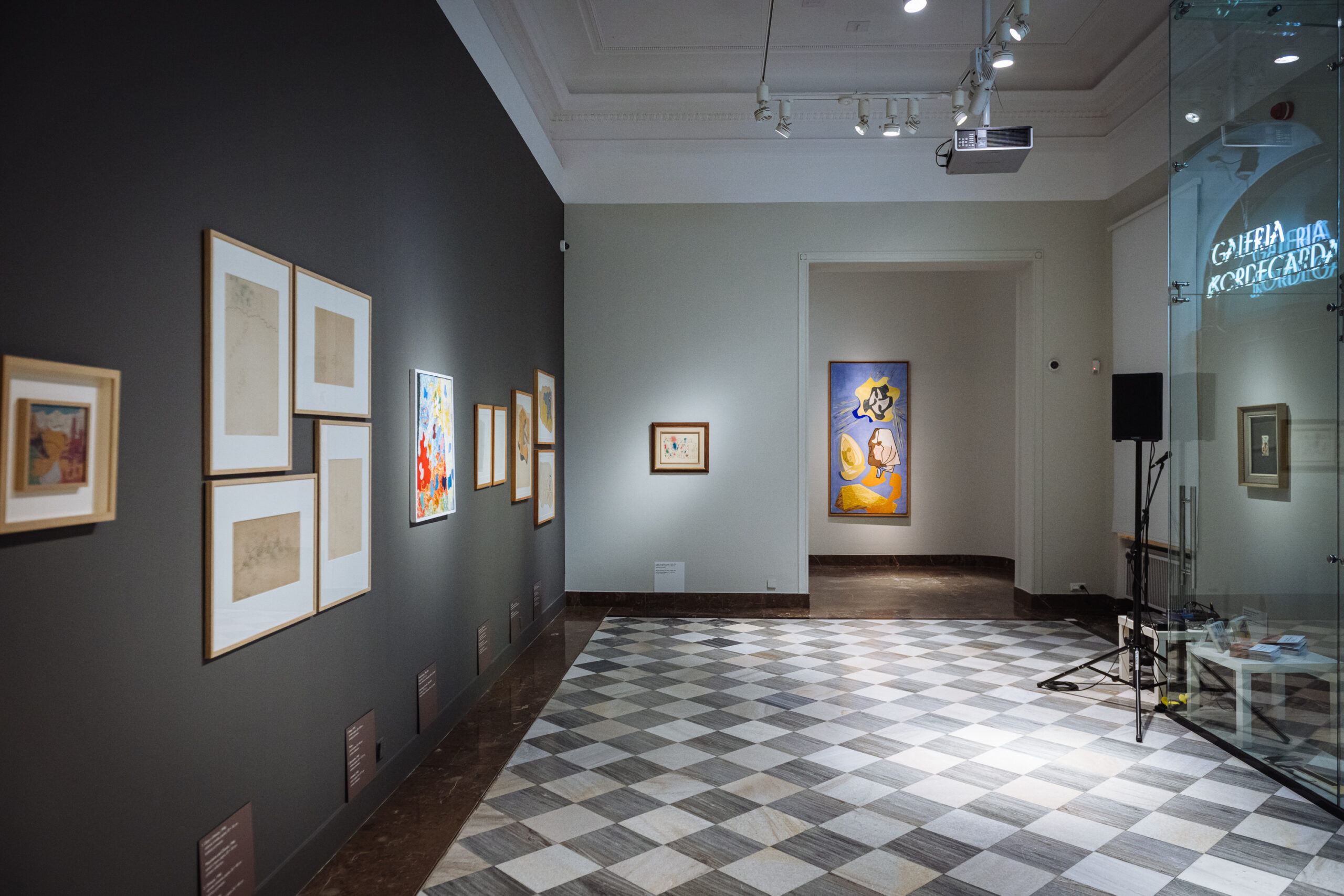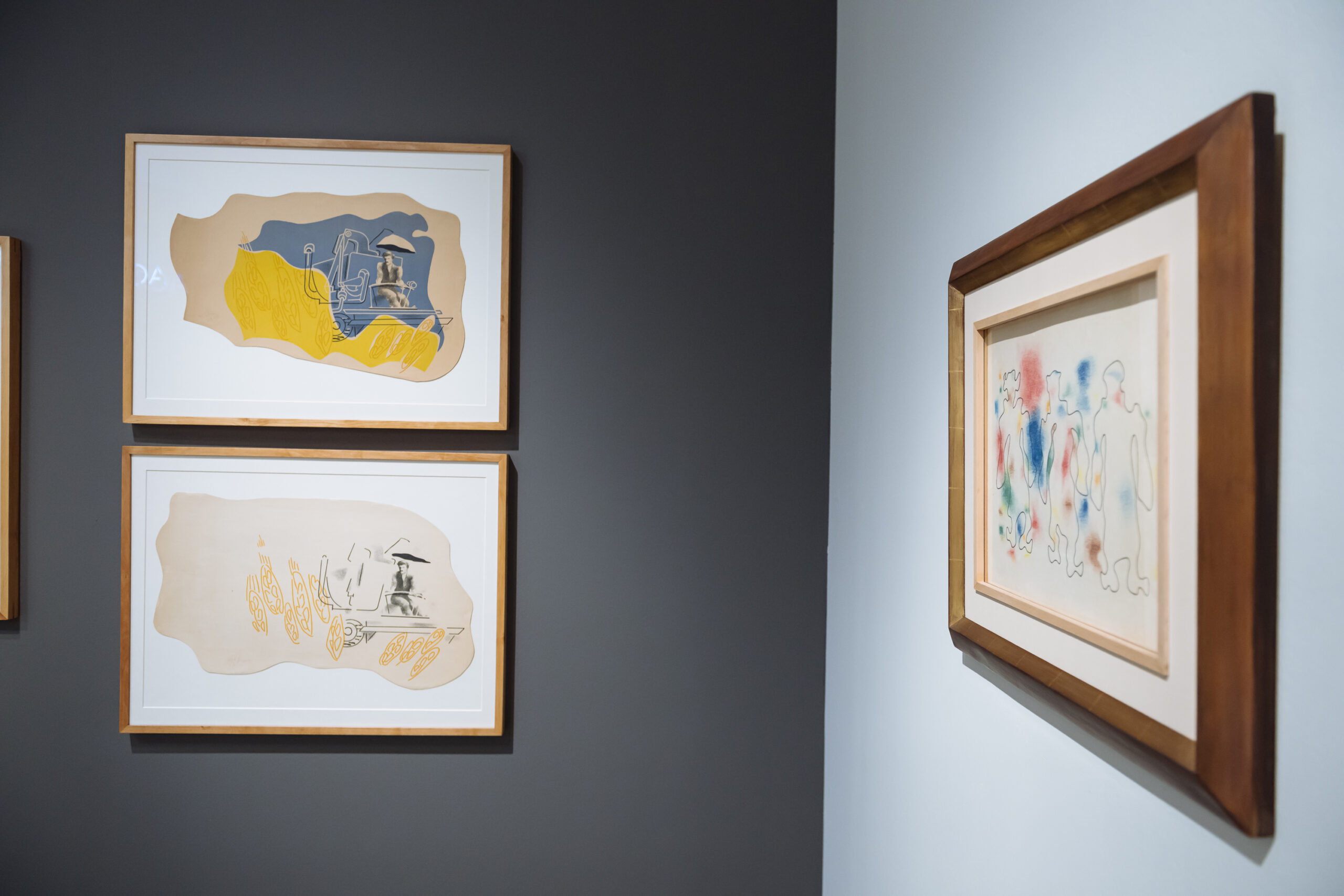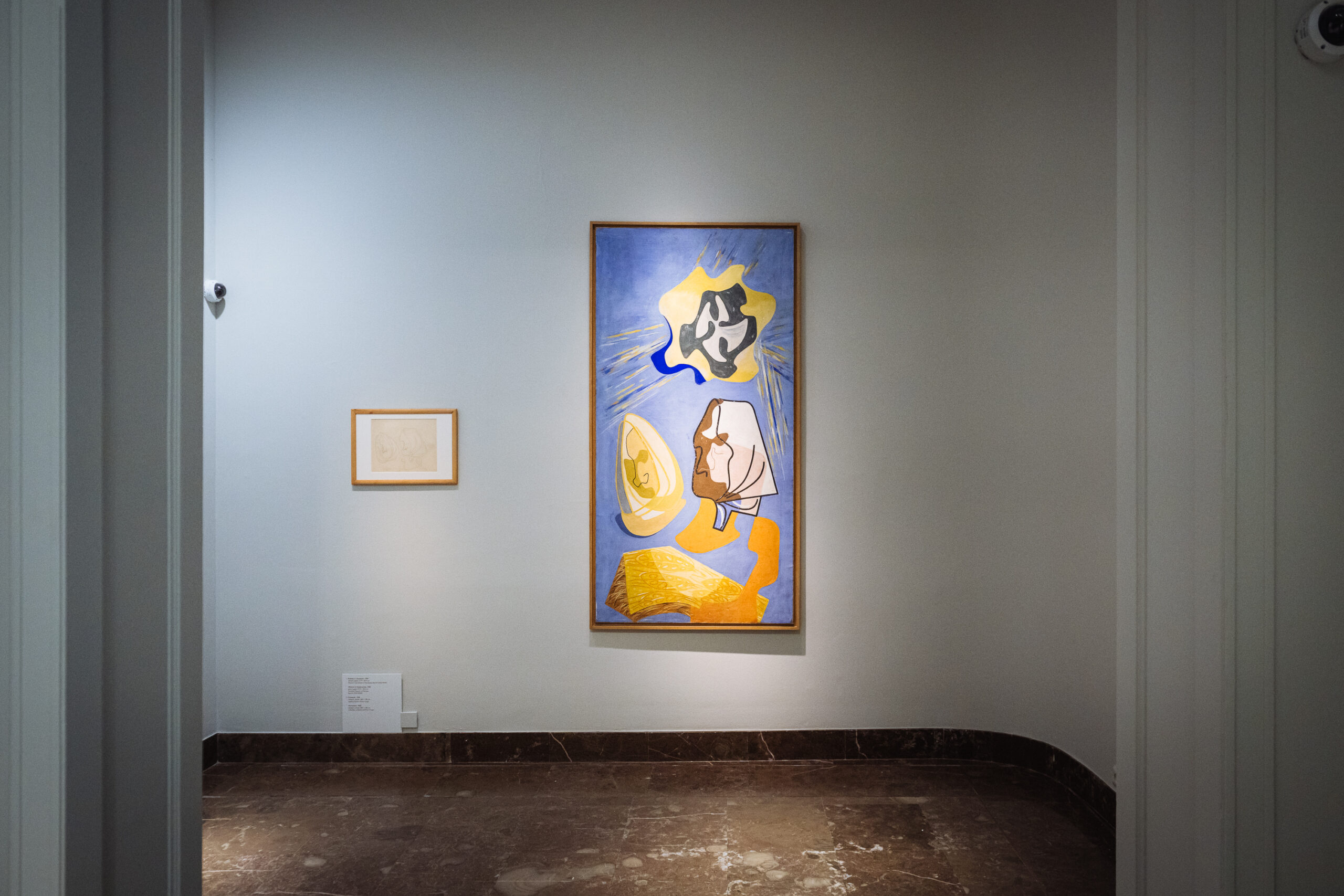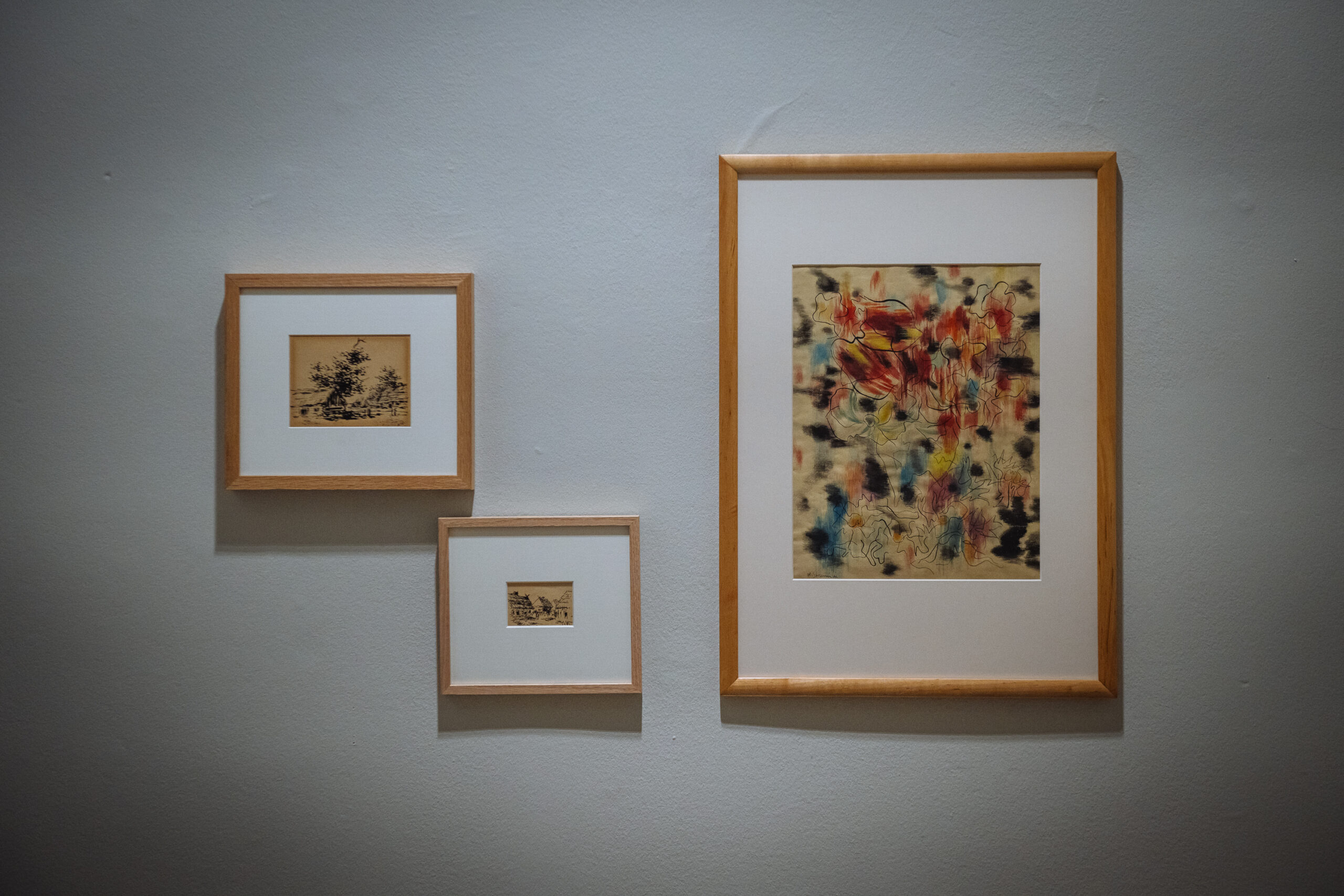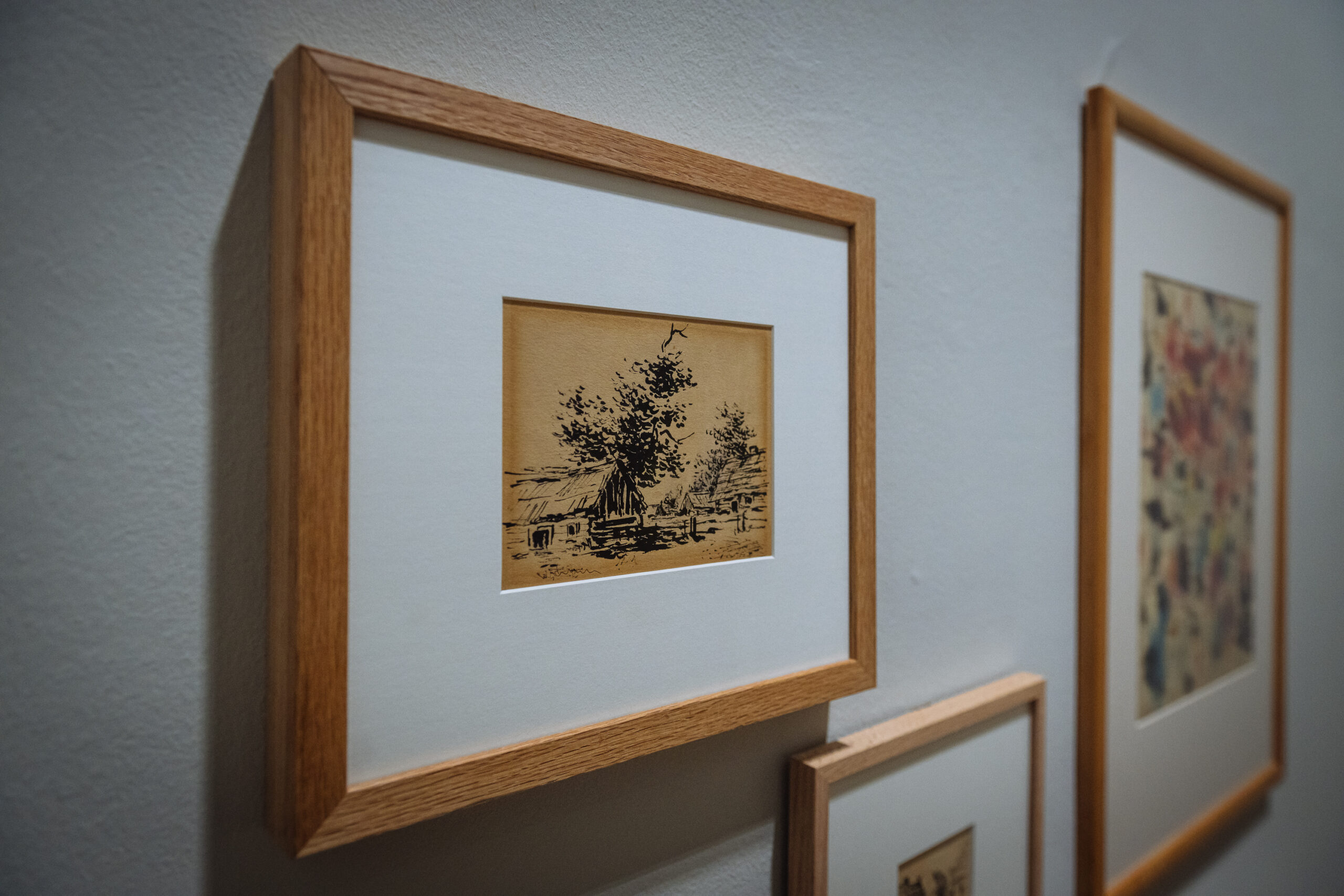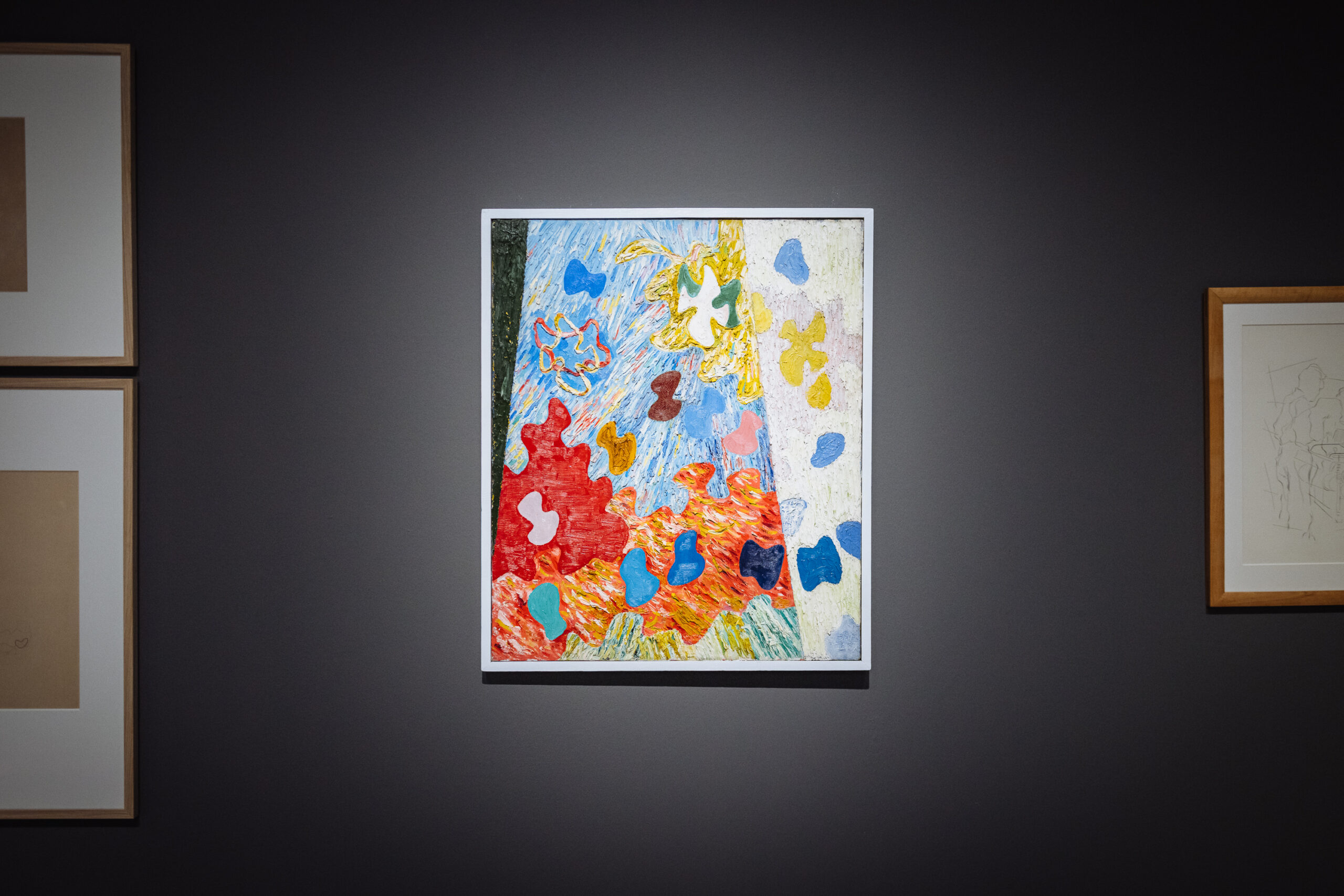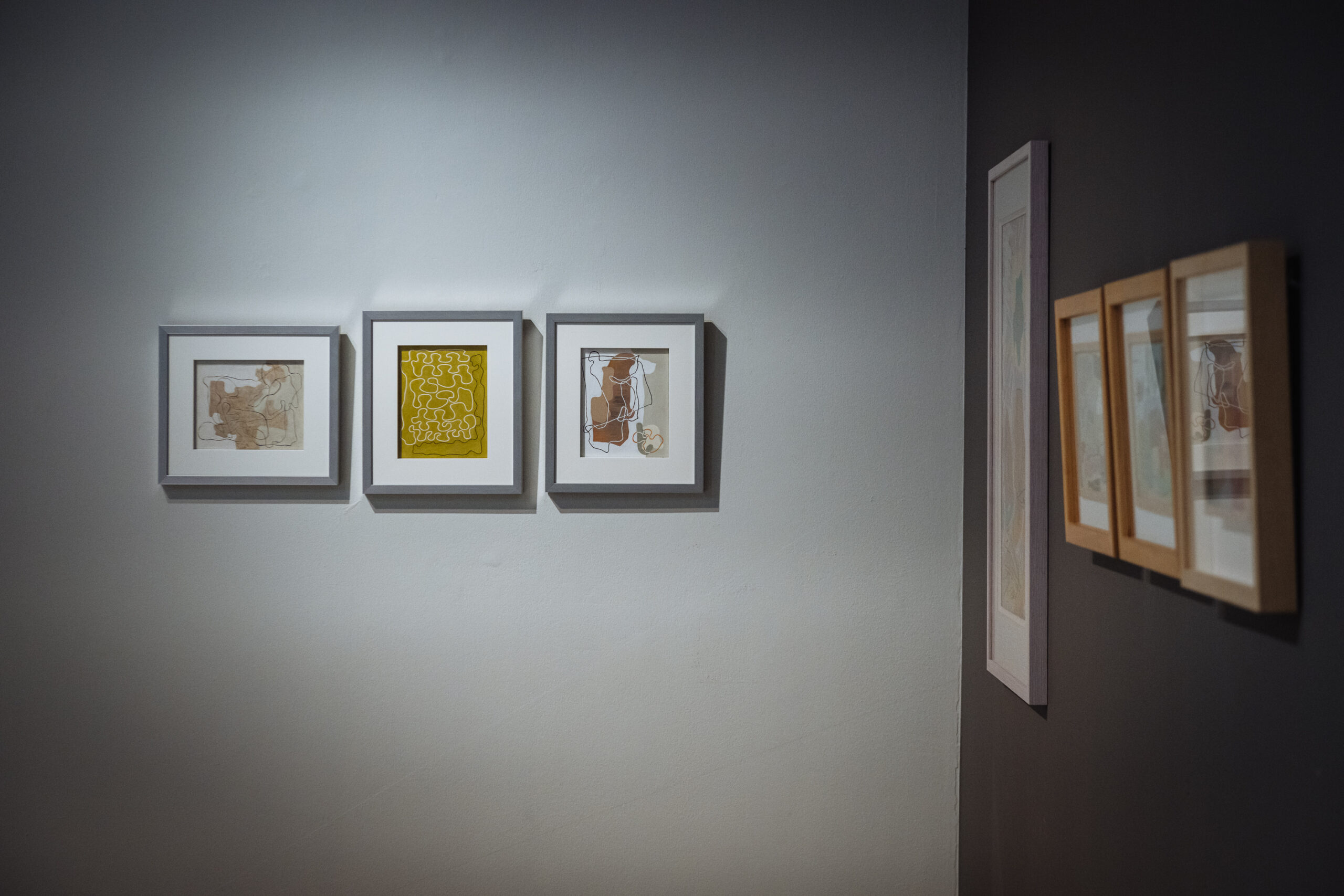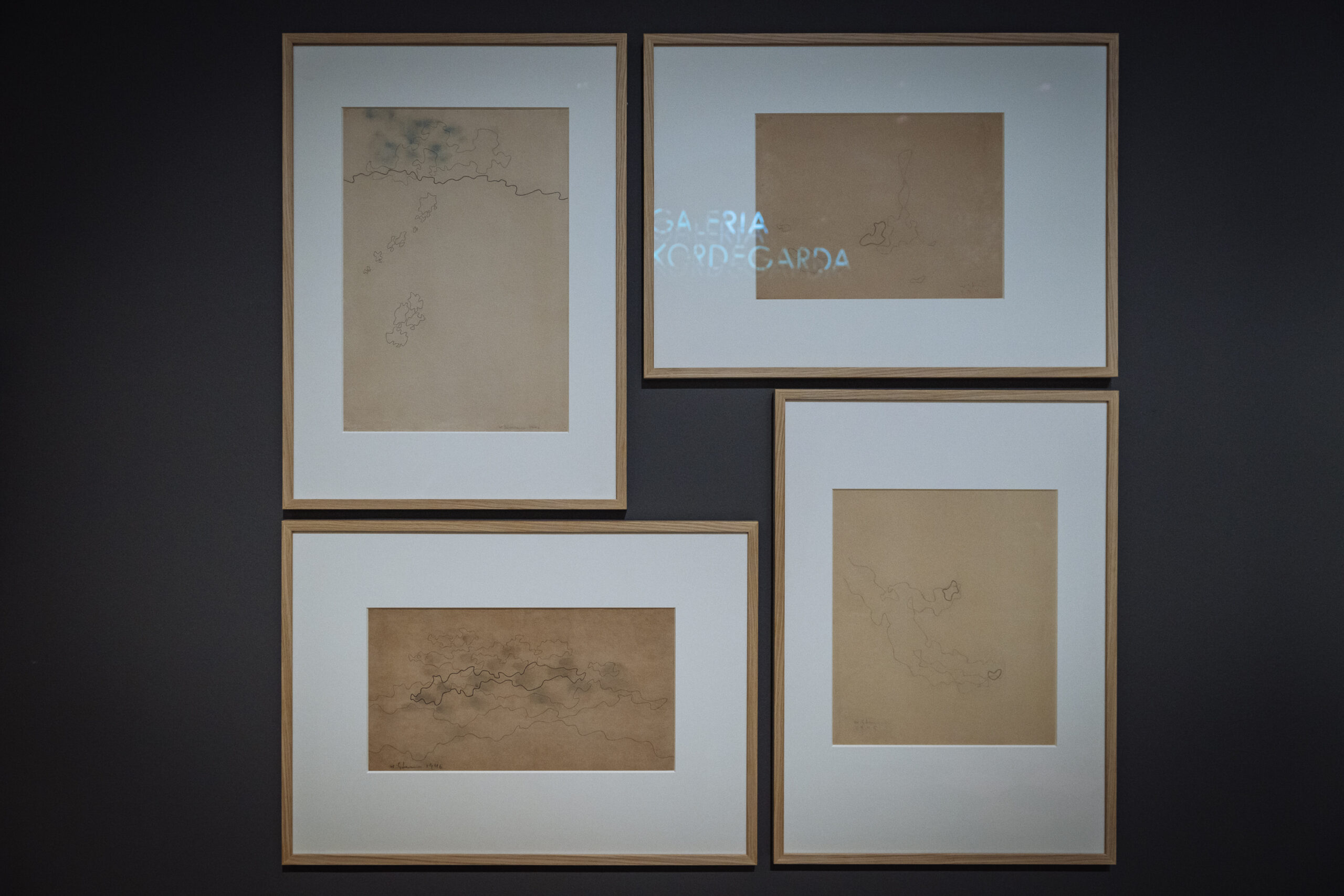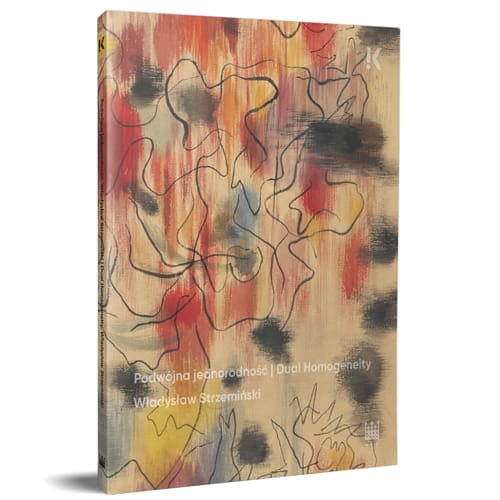Dual Homogeneity
When Władysław Strzemiński returned to Poland in 1922, he was well aware of the currents that had taken hold of contemporary art in Soviet Russia. He was not interest-ed in the colourism popular in Poland, which could be described, as Lissitzky’s put it, as “icons for the bour-geoisie”. The artist wanted to go from being a reenactor to a “constructor of a new world of objects”.1
Czapski recorded in his memoirs: “with Strzemiński’s and Stażewski’s group, with Malevich’s and Mondri-an’s abstractionists, with our capital in Łódź, a group of a high intellectual level, active and busy, we were in fact one front and our relations were friendly, although we were separated by a chasm in our attitude towards nature… For Strzemiński and his friends, we did useful work, the work of painters with a certain culture, clean-ing the Augean stables, and for this, they respected us. But to them, we were naturally an art of the past, doomed to extinction…”2
Strzemiński initially succumbed to his fascination with Cézanne, whose paintings he viewed in Russian col-lections. He valued the painterly consciousness he
had developed with its mechanisms of movement and rhythm of vision.3 He was successively interested in cub-ism, suprematism and neoplasticism. In revolutionary Russia, he came into contact with the leading artists of the avantgarde. For a time, he was Malevich’s assistant in Vitebsk.
He participated in discussions and polemics on the forging of new art forms. He spoke out in the famous dispute between Malevich and Tatlin, between the proponents of pure expression against the utilitarian treatment of the work undermining the social sense of disinterested art. 4 He stood for a compromise position. Strzemiński was closer to Malevich’s pure art, although he recognised the flaws in this concept. At the same time, he saw in utilitarianism the advantages of prosocial art. However, he firmly rejected Tatlin’s productivism and the equation of art and engineering. “Why tangle things up and call technique art? The discerning eye is able to judge the beauty of technical creations, but anyone with clear thinking understands that the methods and aims of technology are the opposite.”5
Strzemiński was a proponent of purism. He believed that a work of art should be stripped of all extraneous, inci-dental elements that do not constitute its essence. Su-prematism’s greatest merit was its entry into the realm of nonobjective art and the creation of the concept of constructed art, based on universal, objective principles of composition.
In 1928, he formulated the theory of Unism – the most interesting and at the same time the most radical pro-posal of the Polish avantgarde. He sought to define the “fundamental laws of absolute painting”. He recognised that the foundation and meaning of painting is form.
A painting should be homogeneous and organic. Each part of it should be treated as equivalent. The homoge-neous surface of the painting implies a uniform tension of forms, which should be united with the space – the quadrilateral canvas. He negated any object association and spatial illusion. He ruled out the false impression of a dynamic phenomenon. He postulated that each painting was a “discovery” to show a previously un-known principle of composition of colours and shapes.6
The problem with this radical painting, however, was monotony and repetition. Strzemiński realised quite quickly that the repertoire of forms was limited and that the paintings were beginning to look confusingly similar. It was a turning point in his thinking about painting. He returned to objective art, but under the rigours derived from Unism. Studying from nature, he applied the princi-ple of synthesising and simplifying, reaching the level of object truth, in a sense accessible only to children.
Several of the works presented in the exhibition make clear the evolution taking place in his art. The earliest was created in 1928. It is a selfportrait in watercolour, given to one of the students of the Female Secondary School of Commerce and Industry in Koluszki. The tiny card is perhaps a kind of painting practice. Shown from the back, in threequarter silhouette, the figure indicates a predilec-tion towards cubism. The course, taught to second and thirdyear students, covered the analysis of objects
and the human figure from the Analytic Cubist period.7
Gradually, silhouettes, objects and landscapes lose their legibility. Dating from the early 1930s, we present the semiabstract Seaside Landscape, from the collection of the Museum of Art in Łódź. Here, a composition of flatpainted figures and lines creates only the outline of buildings and trees. It is a metaphor for the landscape, unattached to the individuality of the objects. It seems like a compact generalisation when compared to the realistic postcards. To the untrained eye, this refined, ascetic landscape appears almost abstract. The colour palette has been limited, but several colour combina-tions are based on contrast. The curvature of the white and black lines on the surface is striking. They give the composition its impression of dynamism. We feel that this is a study in seeing and wind analysis.
Illusory image values are gradually eliminated. Reduc-tion applies equally to forms and colours. In the two City-Scapes of Łódź from the collections of MS and the private collection, the outline of the city is reduced to a sign of conventional legibility. We recognise buildings, or indeed their equivalents, by their distant association with windows and chimneys. Strzemiński undoubtedly manages to preserve the rhythm and pulsation of the city in these works.
Kept in browns and greys, the two tempera paintings on cardboard from the collection of the Museum of Art in Łódź – Conversation and Still Life (With an Apple) – give the impression of works linked into an organic whole through their uniform colour palettes and tension, undif-ferentiated in valour, with identical light intensity.
In his drawings from the 1940s, the colour spot is sub-ject to increasing autonomy. It is applied in isolation from the form. At the same time, it is intensifying. In the drawing People During the War from a private collection and Flowers from the MNW, the chromatically saturated patches of colour are completely independent of the contour. Here, Strzemiński introduces a repertoire of primary colours used in neoplasticism, enriched with green and brown.
The 1941–1946 drawings, simplified and drawn with a wavy outline, retain a tremendous expressive charge. The artist showed human silhouettes twisted in convul-sive spasm. Strzemiński almost strives to create a new kind of matter, selfcontained creations whose elo-quence is heightened by human survival.
The dynamism of these works is sometimes emphasised by the double contour line. After the war, Strzemiński creates a series of “produc-tions”. The most popular are Harvesters, appearing as many as three times in the exhibition – from two pri-vate collections and the National Museum in Warsaw. The group of these works also includes lithographs from the MNW: Harvest and Weaver. These were works created in response to propaganda, but in harmony with his artistic conscience. As Julian Przyboś wrote in his introduction to Teoria widzenia (Theory of Seeing):
In order to intensify the propaganda message of the painting, he based the composition of the figures on the association of shapes, the sun here is also a four-leaf clover, the head of the peasant woman is an allusion to a potato, and the seeds are loaves of bread, etc. The work, however, has nothing of Arcimboldo’s grotesqueness, for all these allusive forms are not a mechanical addition of one object to another, but a fact of seeing, a visual phenomenon.8
Dating from the early 1950s are two entirely realistic drawings, depicting wooden huts and a group of trees. The smaller one was carried “for good luck” in the wallet of a later owner for a long time. In them, the artist limits himself to selecting a motif and reproducing spatial rela-tions, but without violating the visual construction.
Neither the “productions” nor the humble drawings were the kind of art that would have been an expected response to the doctrine of socialist realism. As a re-sult of the “class refreshing of cadres”, Strzemiński,
accused of formalism, was expelled from the academy. He was prevented from practising his profession. He tried painting signs for a short time. At the end of 1951, he was found unconscious, emaciated from starvation, on a street in Łódź. He died a year later, on 26 Decem-ber 1952, of tuberculosis.
The last and perhaps most interesting stage of his oeuvre is represented by After-Image of the Sun from the collection of the National Museum in Warsaw, dating from 1948–1949. Only a few oil paintings
were produced in this series. These were abstract, nongeometric works, which Strzemiński dubbed
a particular variety of impressionism “by virtue of the fact that a new component of visual consciousness was included in them.”9 Strzemiński sought to paint the sun by analysing its afterimage. Rational, far from the mysticism and theosophical eschatology of Mondrian and Malevich – he grappled with the metaphysics of light on the ground of psychophysical impressions and optics. After the stage of Unism, Strzemiński returned to portraying matter or, one would say, capturing light. He was now creating paintings about the light that permeates matter.
Julian Przyboś said: “The sun, captured by human eye forever, is burning. These images are like protuberances of colour, as if uncooled, ongoing explosions of light, colours and shapes in a mad rush, like an endless chase of afterimages. You will not find anything like it in Polish painting, or in contemporary world painting.”10
Author: Katarzyna Haber
1 Adam Kotula, Piotr Krakowski, Malarstwo. Rzeźba. Architektura. Wybrane zagadnienia plastyki współczesnej, Warszawa 1972, p. 162.
2 J. Woźniakowski, Co się dzieje ze sztuką, Warszawa 1974, pp. 128–129.
3 W. Strzemiński, Teoria widzenia, Łódź 2016, p. 19.
4 A. Turowski, Strzemiński, grupa “a.r.” i współcześni, Łódź 2019, p. 31.
5 W. Strzemiński, O sztuce rosyjskiej. Notatki, “Zwrotnica” 1923, no. 4, p. 112.
6 W. Strzemiński, Teoria widzenia, op. cit., p. 44.
7 P. Kurc-Maj, Katalog dzieł, Władysław Strzemiński, [in:] Międzynarodowa Kolekcja Sztuki Nowoczesnej grupy “a.r.”, concept and editing P. Kurc-Maj, A. Saciuk-Gąsowska, p. 192.
8 J. Przyboś, Nowatorstwo Władysława Strzemińskiego, [in:] W. Strzemiń-ski, Teoria widzenia, Kraków 1974, p. 9.
9 W. Strzemiński, Teoria widzenia, Kraków 1974, p. 241.
10 J. Przyboś, Nowatorstwo Władysława Strzemińskiego, op. cit., pp. 9–10.

